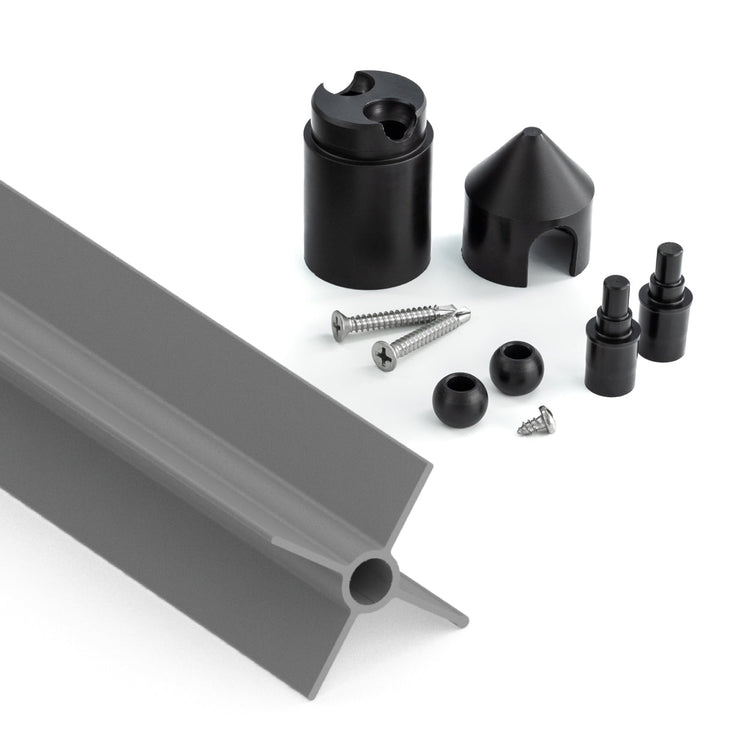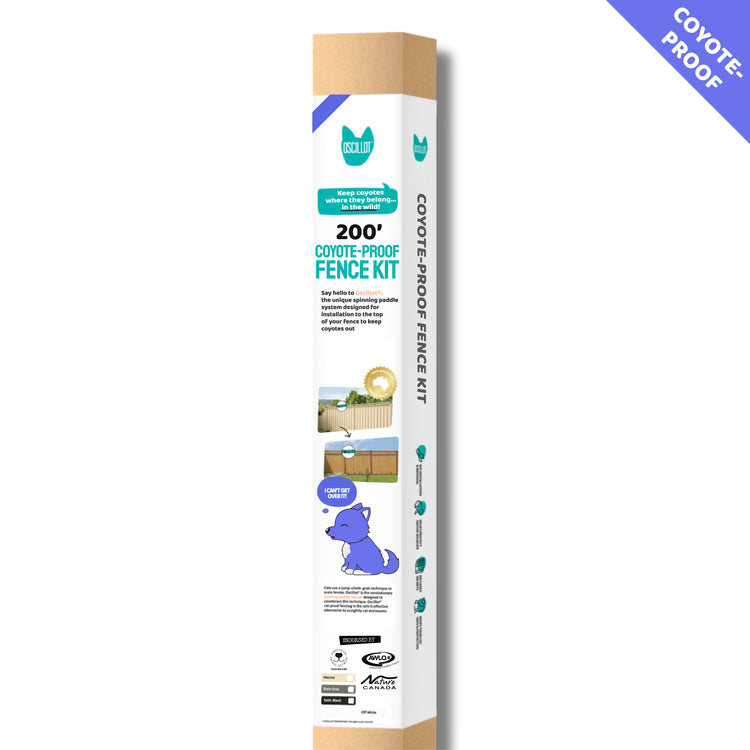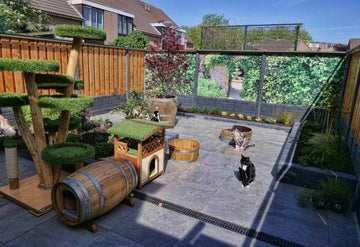DIY vs. Professional Pet Fence: Cost Comparison Guide

Choosing the right pet fence is important for keeping our pets safe. Should you build it yourself or hire professionals? This guide will help you compare the costs and benefits of each option. We'll look at different fencing types, from regular fences to special systems like Oscillot, and show real examples of costs and savings for each choice.
Key Takeaways: DIY vs. Professional Pet Fence Comparison
DIY vs Professional Pet Fence Installation
-
DIY Installation:
- Lower upfront costs
- More time investment required
- Customizable to specific needs
- Requires research and planning
- Satisfaction of personal accomplishment
- Options include traditional fencing and innovative systems
-
Professional Installation:
- Higher initial expense
- Expert installation
- Guaranteed results
- Often includes warranty
- Peace of mind with professional support
- Less time commitment for homeowner
DIY Pet Fence Solutions: A Hands-On Approach
DIY pet fence solutions can save money for handy pet owners. Options range from regular fences to special systems like Oscillot cat-proof fence kits. Let's look at different DIY pet fences, their costs, how hard they are to install, and how long they last.
Regular fences keep pets in and other animals out. You can choose wood, vinyl, or chain-link fences. Each has good and bad points in terms of cost, looks, and how well they work. Wood fences give privacy but need more care. Chain-link is cheaper but not as nice to look at.
For cats that climb or dogs that jump, special solutions like the Oscillot system work well. You can add these to fences you already have. The Oscillot system has spinning paddles that stop cats from climbing over, keeping them safe without needing a whole new fence.
Dog owners can use dog-proof fence kits to keep their dogs in the yard. These kits usually have everything you need to set them up. They're good for big dogs or dogs that like to dig, as you can put them above and below the ground.
Cost Breakdown of DIY Options
When thinking about a DIY pet fence, you need to consider all the costs. Here's what you might expect to pay:
- Materials: This includes fencing, posts, and special parts like Oscillot rollers. Regular fencing can cost $7 to $45 per foot, depending on what it's made of.
- Tools: You might need to buy or rent tools like post-hole diggers or drills. This could cost $100-$300.
- Time: Don't forget to think about how much your time is worth. Setting up a fence yourself can take 20 to 40 hours, depending on how big and complex it is.
- Extra stuff: You might need things like concrete for posts, gravel for drainage, or paint for wood fences. This can add 10-20% to your material costs.
- Permits: Check if you need permits in your area. These can cost $50-$200.
For example, the Oscillot 300 Dog Proof Fence Kit costs $300.00 and covers 300 feet. This is much cheaper than hiring professionals, which could cost $1000-$1500 just for labor to cover the same area.
Pros and Cons of DIY Installation
Pros and Cons of DIY Pet Fence Installation
Cost savings on labor
Reduce installation expenses
Customization
Tailor to specific needs
Time-consuming
Requires significant effort
Potential for mistakes
Risk of improper installation
Professional Pet Fence Installation: Expert Solutions
Professional pet fence installation has its own benefits. Let's look at what you get when you hire experts, including the services they offer, the quality of materials they use, and the long-term benefits of professional installation.
Professional pet fence services usually offer:
- Checking your yard to find the best fence solution
- Designing a fence system that fits your yard and pet needs
- Using high-quality materials that last longer
- Expert installation by trained workers
- Warranty on products and installation
- Help and maintenance after installation
Professional installation costs more upfront but can be worth it for the quality and peace of mind. Professionals can usually finish the job faster and with less disruption to your yard.
Oscillot Cat-Proof Fence System: A DIY Solution
For cat owners, the Oscillot Cat-Proof Fence System is a good DIY option. This system stops cats from climbing over existing fences, which is cheaper than building a whole new fence. Let's look at how this system works and how it compares to other ways of keeping cats in the yard.
The Oscillot system has paddles that spin when a cat tries to climb over, gently stopping them without hurting them. This is nicer than electric fences or barbed wire. It's easy to install yourself. The 300 Cat Proof Fence Kit covers 300 feet and is made of strong materials that can handle different weather.
When thinking about the cost of the Oscillot system, remember that it can save you money on vet bills by keeping your cat safe. You can also add to it or change it later if you need to. For more information on DIY vs. store-bought cat-proof fence options, check out our detailed cost comparison guide, which shows how different solutions work in different situations.
Oscillot Dog-Proof Fence Kits: DIY Coyote Protection
If you live where coyotes are a problem, Oscillot has dog-proof fence kits that keep your dogs in and coyotes out. You can install these yourself, which is good for saving money on big yards. Let's look at what these kits offer and how well they work for different types and sizes of dogs.
The 200 Dog Proof Fence Kit costs $199.99 and covers 200 feet. It's made of strong plastic that doesn't break down in the sun. This kit works for dogs up to 200 lbs, so it's good for small dogs and big dogs. You can install it yourself, and everything you need comes in the kit.
Compared to hiring professionals to install a coyote-proof fence, these kits can save you a lot of money. Professional installation for the same area can cost thousands of dollars. But remember to think about how comfortable you are with DIY projects and how much time you have. It might take a weekend to install for an average yard, but could take longer for bigger or more complicated yards. For more information on ways to keep coyotes out, including professional options, check out our guide on coyote rollers and other ways to stop coyotes. This guide helps you choose the best option for your situation and the wildlife in your area.
Factors to Consider When Choosing Between DIY and Professional Installation
Choosing between DIY and professional pet fence installation isn't just about money. There are other things to think about to make sure you're making the best choice for your situation. Let's look at these factors in detail:
Property Size and Layout
Big or complicated yards: Professional help recommended. Smaller, simpler yards: Good for DIY solutions.
Pet Type and Behavior
Pets that escape or big dogs: Might need professional systems. Well-behaved pets: Often okay with simpler DIY options.
Personal Skills and Time
DIY: Needs time and handyman skills. Professional: Saves time but costs more.
Also, check your local rules and neighborhood association rules about fences. Some areas have specific rules about how tall fences can be or what they can be made of. This might affect whether you choose DIY or professional installation. For example, some neighborhoods want all fences to be the same color or style, which might be easier with professional installation.
Case Studies: Real-World Cost Comparisons
To help you understand how DIY and professional pet fence installations compare in real life, let's look at a few examples. These stories show the practical things to think about and what happened with different approaches to keeping pets in the yard:
Small Urban Yard: DIY Oscillot Installation
Sarah, who owns cats in a city townhouse, decided to install the Oscillot system on her fence. Her yard is about 100 feet around, so she bought the 100 Dog Proof Fence Kit and adapted it for her cats. The total cost, including some extra tools she had to buy, was about $350. It took her a whole weekend to install, but she saved around $500-$700 compared to what professionals would have charged. Sarah found it challenging but rewarding, and she liked being able to customize it for her needs. After six months, she said the system was working well to keep her two cats in the yard.
Large Rural Property: Professional Fence Installation
The Johnson family, living on 5 acres with three big dogs, chose to have professionals install a regular fence and an electronic system. The total cost was $7,500, which included clearing some bushes, putting up 1,500 feet of fencing, and setting up the electronic system. While this was much more expensive than doing it themselves, the Johnsons felt it was necessary because their property was so big and they didn't have time for a big DIY project.
Conclusion
Based on the comprehensive analysis of DIY versus professional pet fence installation, the choice ultimately depends on your specific circumstances, budget, and comfort level with hands-on projects. DIY solutions like the Oscillot system offer significant cost savings, with kits ranging from $199-$300 that can cover 200-300 feet, compared to professional installations that often cost $1,000-$1,500 just for labor in the same area. For pet owners who are handy, have adequate time (typically 20-40 hours for installation), and own smaller properties with straightforward layouts, DIY installation can provide substantial savings while allowing for customization to meet specific pet needs. The satisfaction of completing the project yourself and the ability to modify the system later are additional benefits that appeal to many homeowners.
However, professional installation becomes increasingly valuable for larger properties, complex yard layouts, or situations involving particularly challenging pets that require specialized containment solutions. While the upfront costs are higher, professional installation typically includes warranties, expert assessment of your property's unique needs, and the peace of mind that comes with guaranteed results. The time savings alone can justify the additional expense for busy homeowners, and professionals often complete installations faster with less disruption to your landscape. Whether you choose DIY or professional installation, investing in a quality pet fence system—whether it's a traditional fence, innovative solutions like Oscillot, or specialized dog-proof barriers—is essential for keeping your pets safe while giving them the freedom to enjoy your outdoor space.








